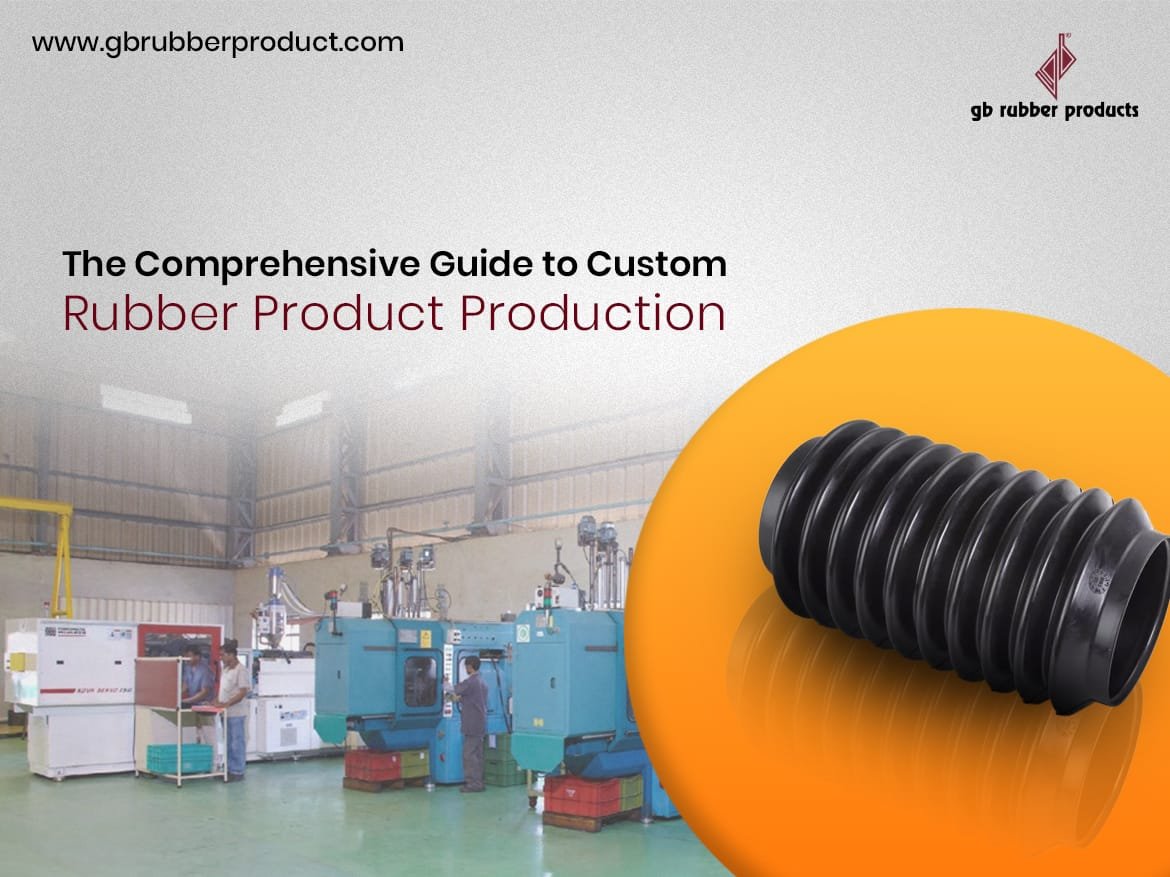When you look around, it is easy to spot rubber products in our everyday lives.
But have you ever wondered how those rubber parts are made, especially when they are custom-designed for a specific purpose?
Today, customization is king, and with time, custom rubber product have become an integral part of various industries, right from automotive to electronics, owing to their flexibility and durability.
These specialized components, tailored to meet specific needs, have revolutionized the way we engineer, assemble, and function in modern life. The process of manufacturing custom rubber parts involves a fascinating blend of science, technology, and craftsmanship.
Custom rubber moulded products manufacturer can choose from a diverse range of rubber types, including natural rubber, synthetic blends, and specialty compounds, each offering unique properties such as durability, flexibility, and resistance to extreme conditions.
In this blog, we will explore the various things involved in the custom rubber parts manufacturing process, shedding light on the journey from raw materials to the final product.

The Manufacturing Process
Custom rubber parts may appear simple, but the journey from raw material to the final product is a complex and precise one. The manufacturing process can be broadly divided into several key stages, each playing a crucial role in producing high-quality rubber parts.
1.Material Selection
The process begins with the selection of the appropriate rubber compound. This choice depends on the specific requirements of the part, considering factors like temperature resistance, chemical compatibility, and mechanical properties. Common materials used for a rubber product include natural rubber, synthetic rubber, and specialty compounds like fluoroelastomers for extreme conditions.
2.Compounding
Once the rubber material is selected, it is mixed with various additives and curing agents in a process called compounding. This step creates a homogeneous mixture with consistent properties.
3.Molding
The mixed rubber compound is then placed into a mold, which is a cavity in the desired shape of the custom rubber part. The molding process can be done using various techniques, such as compression molding, injection molding, or transfer molding, depending on the part’s complexity and requirements.
4.Curing
After molding, the rubber part is subjected to a curing process, often involving heat and pressure. Curing strengthens the part and finalizes its shape, ensuring it can withstand the intended operating conditions.
5.Trimming and Finishing
Once cured, the custom rubber part may require additional trimming and finishing to achieve the desired dimensions and surface quality. This step ensures that the part conforms precisely to the client’s specifications.
6.Quality Control
Quality control is a crucial part of the manufacturing process and is highly followed by most rubber seal manufacturers in India. Each custom rubber part is inspected for defects, dimensional accuracy, and material integrity. This ensures that the final product meets the client’s expectations and industry standards.
7.Packaging and Delivery
Once the custom rubber parts have passed all quality checks, they are carefully packaged and prepared for shipment to the customer. Packaging is essential to protect the parts during transit and storage.
Meeting Unique Requirements
The beauty of custom rubber parts lies in their versatility. Manufacturers can tailor these parts to meet specific requirements, ensuring they function optimally in their intended applications. Here are some of the key components in the production of custom rubber products that manufacturers take into account.
- Size and Shape: A custom rubber product can be produced in an extensive range of sizes and shapes, from tiny washers to large, intricate gaskets. The dimensions are tailored to fit the intended space or component perfectly.
- Material Properties: The choice of rubber compound is essential and depends on the part’s intended use. Materials can be selected for their resistance to extreme temperatures, chemicals, or UV radiation, among other factors.
- Durometer (Hardness): The hardness of the rubber material, measured on the durometer scale, is customized to provide the right balance between flexibility and rigidity for the specific application.
- Color and Appearance: In some cases, custom rubber parts are produced in specific colors or with particular surface finishes to match branding or aesthetic requirements.
- Tolerance and Precision: Manufacturers and various rubber products supplier ensure that the custom rubber parts meet strict tolerance levels to guarantee proper fit and functionality in the application.
Challenges in Custom Rubber Product Manufacturing
Custom rubber parts manufacturing has its challenges. It requires expertise and precision to meet the unique demands of each project. Some of the common challenges include:
- Material Compatibility: Ensuring that the chosen rubber compound is compatible with the specific application and environmental conditions.
- Tooling and Mold Design: Creating molds that accurately reproduce the desired part while accounting for shrinkage and other factors.
- Quality Control: Maintaining consistency and quality throughout the production process, especially in large-scale manufacturing.
- Cost Management: Striking a balance between customization and cost-effectiveness is often a delicate challenge.
Conclusion
The world of custom rubber parts manufacturing is a blend of precision and creativity. Whether it’s for your car, your gadgets, or your household appliances, rubber parts play a crucial role in our daily lives.
At GB Rubber Products, we take pride in crafting high-quality, customized rubber products that meet your unique needs. Right from metal bonded components to sealing products, we have it all. For more information and to explore our range of products, check out our website today.



